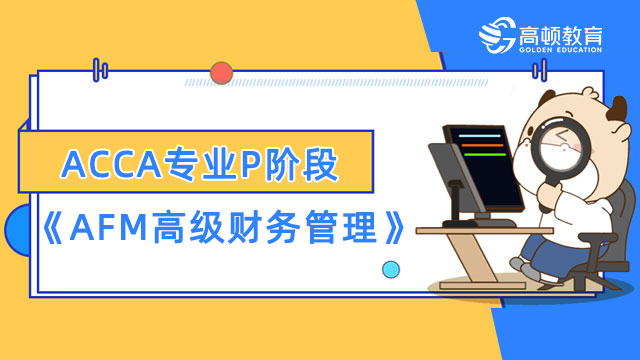2015重点回顾:ACCA考试《专业会计师P1》复习详解9
来源:
高顿网校
2015-02-11
漫漫考试路,各位考生,您准备好了吗?如何快乐高效的学习?高顿网校为广大学员提供2015年ACCA考试网络课程,请各位考生紧跟网校名师的步伐尽快进入备考复习,让高顿与您共同努力,2015年考试顺利通过!祝您梦想成真!免费听课》
Risks impact on stakeholders
(1) Shareholders: Potential loss of value of investment (fall in share price) and loss of income (decrease in dividends)。
(2) Directors: Loss of income (assuming remuneration is linked with company performance) and potential for poor reputation.
(3) Managers/Employees: Fall in remuneration or become demotivated.
(4) Customers: Mainly negative impact on the company because of poor product reputation.
(5) Suppliers: Loss of supply.
(6) Government: Less tax revenue raised.
(7) Banks: Loans and interest due to banks are not repaid.
Risk assessment
Risk map
(1) The map identifies whether a risk will have a significant impact on the organization and links that into the likelihood of the risk occurring.
(2) The approach can provide a framework for prioritizing risks in the business.
(3) Risks with a significant impact and a high likelihood of occurrence need more urgent attention than risks with a low impact and low likelihood of occurrence.
(4) The significant and impact of each risk will vary depending on the organization.
Board consideration of risk
(1) The board considers risk at strategic level and defines the organization’s attitude and approach to risk.
(2) The board is responsible for ensuring that risk management supports the strategic objectives of the organization.
(3) The board will determine the level of risk which the organization can accept in order to meet its strategic objectives, and which cannot be managed or is not cost-effective to manage.
(4) The board ensures that the risk management strategy is communicated to the rest of the organization and integrated with all the other activities.
(5) The board is responsible for driving the risk management process and ensuring that managers responsible for implementing risk management have adequate resources.
(6) The board reviews risks and identifies and monitors progress of the risk management plans.
Reporting on internal control and risk
(1)
(2)
(3)
(4)
(5)
Part D – Controlling Risk
Role of risk manager
(1) Risk manager is a member of the risk management committee, reporting directly to that committee and the board.
(2) The role of manager focuses primarily on implementation of risk management policies.
(3) The risk manager is supported and monitored by the risk management committee.
(4) Policy is set by the board and the risk management committee and implemented by the risk manager therefore the role is more operational than strategic.
(Risk manager is responsible for)
(1) Identifying and evaluating the risks affecting an organization.
(2) Implementing risk mitigation strategies including appropriate internal control to manage identified risks.
(3) Seeking opportunities to improve risk management methods and practices.
(4) Developing, implementing and managing risk management programs and initiatives.
(5) Maintaining good working relationships with the board and the risk management committee.
(6) Working with the external auditors to provide assurance and assistance in their work in appraising risks and controls of the organization.
(7) Reporting on risk management.
Role of internal/external auditing
(1) Risk is integral to the work of internal and external audit, both in terms of influencing how much work they do and also what work they actually do.
(2) Risk auditing assists the overall risk monitoring process by providing an independent view of risks and controls in an organization.
(3) With auditing, a fresh pair of eyes may identify errors or omissions in the original risk monitoring process.
(4) External auditors will be concerned with risks that impact most on the figures shown in the financial accounts.
(5) Internal auditors have more flexible role and their approach depends on whether they focus on the control or the overall risk management process.
Risk awareness/attitude
(1) In general, a lack of risk awareness means that an organization has an inappropriate risk management strategy.
(2) Risks may not have been identified meaning there will be a lack of control over that risk.
(3) Risk may occur and the control over that risk is not active due to lack of monitoring and awareness.
(4) Continued monitoring within the organization is therefore required to ensure that risk management strategies are updated as necessary.
(5) Risk awareness can be divided into three levels: strategic level, tactical level, and operational level.
(6) Risk attitude is influenced by many factors: (a) response to shareholder demand; (b) the size, structure and stage of development of the organization; (c) the pursuit of business opportunities, say entrepreneurial risk. (d) personal views and cultural influence.
Embedding risk
Organization’s systems/procedures
(1) Embedding risk means that ensure risk management is included within the control systems of an organization.
(2) Embedding risk also means that risk assessment should evolve into a consistent, embedded activity within a company’s strategic, business, budget and audit planning process rather than be executed as a significant stand-alone/separate process.
(3) Embedding risk is a statutory requirement of a code of best practice. To be successful, embedding risk management needs approval and support from the board.
Organization’s culture/values
(1) Embedding risk into system/procedure may still fail unless all workers (board to employee) in a company accept the need for risk management.
(2) Embedding risk into culture and values implies that risk management is ‘normal’ for the organization.
(3) Embedding a risk management frame of mind into an organization’s culture requires top-down communications on what the risk philosophy is and what is expected of the organization’s people.
(4) Whether the culture is open or closed affects the success of embedding risk management within the culture and values of an organization.
ACCA考试的报名时间、考试动态,高顿网校会在*9时间通知大家,敬请关注高顿网校*7考试动态【提示:“Ctrl+D”收藏此页面】。
精彩推荐:
| 课程专业名称 | 讲师 | 试听 | |
 | ACCA 全维度网课体验课程 | 高顿名师 |  |
 | ACCA网课全科卡(8.2折) | 高顿名师 |  |
版权声明:本条内容自发布之日起,有效期为一个月。凡本网站注明“来源高顿教育”或“来源高顿网校”或“来源高顿”的所有作品,均为本网站合法拥有版权的作品,未经本网站授权,任何媒体、网站、个人不得转载、链接、转帖或以其他方式使用。
经本网站合法授权的,应在授权范围内使用,且使用时必须注明“来源高顿教育”或“来源高顿网校”或“来源高顿”,并不得对作品中出现的“高顿”字样进行删减、替换等。违反上述声明者,本网站将依法追究其法律责任。
本网站的部分资料转载自互联网,均尽力标明作者和出处。本网站转载的目的在于传递更多信息,并不意味着赞同其观点或证实其描述,本网站不对其真实性负责。
如您认为本网站刊载作品涉及版权等问题,请与本网站联系(邮箱fawu@gaodun.com,电话:021-31587497),本网站核实确认后会尽快予以处理。
点一下领资料
【整理版】ACCA各科目历年真题
真题高频考点,刷题全靠这份资料
下载合集
acca全科学习思维导图
梳理核心考点,一图看懂全部章节
下载合集
2023年acca考纲解析
覆盖科目重难点,备考按照计划走
下载合集
acca备考 热门问题解答
- acca考试怎么搭配科目?
-
建议优先选择相关联的科目进行搭配报考,这样可以提高备考效率,减轻备考压力,1、F1-F4:为随时机考科目,难度较低,这里可以自行随意选择考试顺序。2、F5-F9:如果你的工作的和财务会计或者审计有关、或者你比较擅长财务和审计的话,推荐先考F7和F8。你可以选择一起考ACCA考试科目F7和F8或者先考F7(8)再考F8(7),这就要取决你一次想考几门。3、P阶段:选修科目中,建议企业首选AFM!第二部分科目进行选择,如果AA和SBR掌握学生更好,可以通过选择AAA,如果SBL掌握的好,可以自己选择APM。
- acca一共几门几年考完?
-
acca一共有15门考试科目,其中有必修科目和选修科目,考生需要考完13门科目才能拿下证书。
- acca一年考几次?
-
acca一年有4次考试,分别是3月、6月、9月和12月,分季机考科目是采取的这类四个考季的模式,而随时机考则是没有这方面的时间规定限制,可以随报随考。
- acca的含金量如何?
-
ACCA证书的含金量是比较高的,从就业、能力提升、全球认可等角度来说,都是比较有优势的证书,其含金量主要表现在以下几个方面:1、国际化,认可度高;2、岗位多,就业前景好;3、缺口大,人才激励。
严选名师 全流程服务
其他人还搜了
热门推荐
-
acca专业阶段考试科目有哪些?究竟都考些什么? 2023-04-23
-
accaP阶段科目考完需要多久?速戳了解! 2023-03-28
-
ACCA高级课程是哪几门?和基础课程比难度怎么样? 2023-03-17
-
sbr和sbl哪个难?accaP阶段先考哪个? 2023-03-16
-
accaP阶段报名费是多少?一文介绍全了! 2023-03-14
-
accaP阶段有哪些科目?各科目详细介绍! 2023-03-14
-
accap阶段考试顺序是怎样的?选修科目怎么选? 2023-03-10
-
acca考试科目:《ATX高级税务》重点详解! 2023-03-06
-
acca考试科目:《APM高级业绩管理》重点详解! 2023-03-06
-
acca考试科目:《AFM高级财务管理》重点详解! 2023-03-06
-
accap阶段有效期是多久?需要几年内考完? 2023-03-01
-
accaP阶段选修选哪两门?各科难度对比来了! 2023-02-28
-
2023年acca的sbl怎么学?点击查收备考攻略! 2023-02-24
-
acca考试p阶段科目题型,附各科分值参考! 2023-02-23
-
accap阶段要考几门?重难点是什么? 2023-02-10
-
accap阶段要考几门?重难点是什么? 2023-02-10
-
accaP阶段科目怎么搭配?先考哪门? 2023-02-09
-
ACCA专业P阶段:《AFM高级财务管理》复习攻略 2023-01-30
-
accap阶段选哪两门?考试重难点介绍! 2023-01-17
-
acca考试科目:《AAA高级审计与鉴证》题型及重点! 2023-01-17
-
acca专业阶段考试难度分析,选修科目报考指南来了! 2023-01-12
-
accap阶段报考顺序推荐,先报哪个好? 2022-12-15
-
ACCAp阶段一次最多考几门?成绩有效期是多久? 2022-08-24
-
ACCA的p阶段需要备考多久才够?考试难度怎么样? 2022-08-18
-
ACCAp阶段考试需要考几门?考试时间是哪天? 2022-08-15
-
ACCA考试P阶段考几门?P阶段成绩有效期是多久? 2022-08-12
-
ACCAP阶段科目难度高吗?P阶段是机考吗? 2022-08-10
-
ACCA最后四门难考吗?通过率怎么样? 2022-07-19
-
ACCA英语不好怎么办?怎么提高英语? 2022-07-14
-
ACCA机考报名时间是什么时候?怎么报考? 2022-07-14
 更多服务
更多服务









































